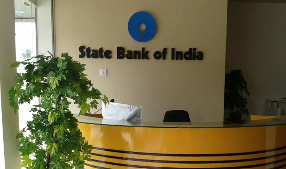According to a recent report by State Bank of India (SBI), there has been a significant 74.2% reduction in income disparity among individuals earning up to Rs 5 lakh per year between fiscal year 2013-14 and 2022-23.
The bank in its report titled ‘How Tax Simplification has given a necessary fillip to ITR Filing’ said, “Our analysis shows that there has been a cumulative 74.2% decline in income disparity coverage for those earning up to Rs 5 lakh. This shows the continuous efforts of Govt are reaching the bottom of the pyramid – that is leading to increase in income of ‘lower income group’ people.”
The income disparity gap narrowed for those earning Rs 3.5 lakh or fewer per year, decreased from 31.8% in FY14 to 12.8% in FY21. This bucket group has seen a remarkable 19% increase in income in comparison to their population, said the report.
The report further said that over the past decade, the lower income group (earning less than Rs 5.5 lakh) has consistently shown positive growth, with the sole exception being Assessment Year 2020, when growth was negatively impacted by the COVID-19 pandemic.
India’s direct tax contributions have reached a 14-year-high, accounting for 56.7% of total tax revenue in Assessment Year 2024, driven by the country’s progressive tax regime, according to the report.
Personal Income Tax (PIT) revenues have surpassed Corporate Income Tax (CIT) collections since FY2021, with a 6% increase compared to CIT’s 3% growth.
SBI Study: Other Findings
- In AY24, the direct tax-to-GDP ratio reached a 24-year high of 6.64%.
- ITR filings in AY24 saw a substantial increase, rising to 8.6 crore from 7.3 crore in AY22.
- Nearly 79% of tax returns, totalling 6.89 crore, were submitted on or before the deadline.
- Uttar Pradesh is at top in increasing share in income tax file base. The state is followed by Bihar, Andhra Pradesh, Punjab and Rajasthan.
- States like Maharashtra, Delhi, Gujarat, and Karnataka are now nearing their maximum capacity for ITR filings.



